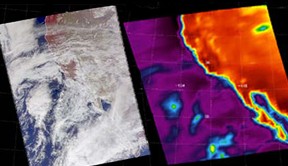The picture on the right shows how AIMS sees the world. The image on the left shows the same scene but using visible light. The red colors in the AIMS image indicate warm air rising from the west coast of the United States and the purple colors indicate cool air over the Pacific Ocean. Both pictures were taken on March 11, 2003.
Click on image for full size
NASA/JPL
A New Look at Weather!
News story originally written on May 14, 2003
Predicting the weather is not an easy job, but it is becoming easier as new technologies are developed. NASA's Aqua satellite is one of these new technologies that are helping meteorologists make even better forecasts of short-term weather and long-term climate change.
Aboard the satellite, visible, infrared and microwave detectors are used together as part of the AIRS (Atmospheric Infrared Sounder) experiment that looks at the activity within Earth's atmosphere. The tools peer through all levels of the atmosphere, sensing different regions and creating a global three-dimensional map of temperature and humidity.
Even on a cloudy day these instruments are able to map the atmospheric conditions. In fact, the instruments provide a detailed look at clouds, including the thin cirrus clouds that increasingly shroud our planet due to global warming. They also record information about concentrations of various greenhouse gases including carbon dioxide and methane.
The information gleaned by the instruments on this satellite will be used to create more detailed weather predictions and develop an even more accurate picture of how our climate is changing. We will be able to more accurately track severe weather events such as hurricanes.
NASA's Jet Propulsion Laboratory in Pasadena California manages the experiment. According to project team leader Dr. Moustafa Chahine, "meteorologists around the world have been eagerly awaiting the availability of this processed AIRS data, and are already reporting measurable increases in the accuracy of their short-term weather predictions".
Last modified May 6, 2003 by Lisa Gardiner.
You might also be interested in:
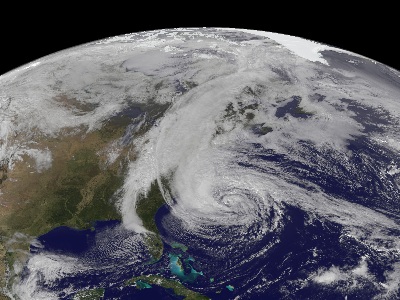
As a strong hurricane heads towards a vulnerable coast, people take precautions - boarding up houses, packing the car, and evacuating. These massive storms can spell disaster for people in hurricane prone
...more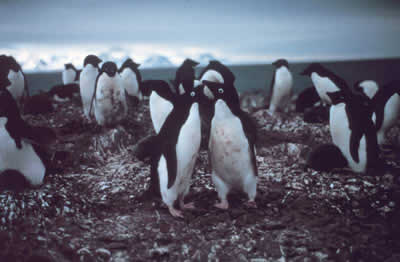
Scientists have recently discovered that thousands of Adelie Penguins thrive in patches of the chilly Southern Ocean near Antarctica's coastline. In these special areas of the ocean, called polynyas,
...more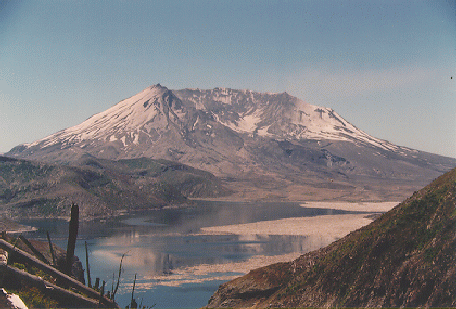
After remaining quiet for 18 years, Mount St. Helens, a volcano in the Cascade Range of Washington, U.S.A., is showing signs of activity, puffing steam and ash as scientists look for clues to whether
...more
Today, our climate is changing at breakneck speeds. To better understand how this speedy climate change may affect plants and animals in the future, researchers are looking into the past. The researchers
...more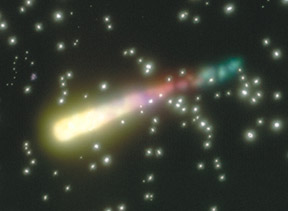
A large meteor exploded in the sky near Chicago shortly after midnight on the morning of March 28, 2003. People in Wisconsin, Illinois, Indiana, and Ohio witnessed the disintegration of the meteor in Earth's
...more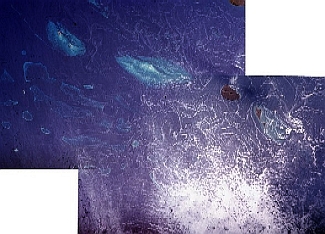
On May 20, 2003, the crew of the International Space Station took a photo of the Earth below them that shows more than a dozen coral reefs sitting in the shallow waters of the Red Sea. The light blue
...more
The first eclipse of 2003 will occur on the night of Thursday, May 15th (or early in the morning on May 16th if you live in Europe!). This eclipse is a total lunar eclipse, so the Earth's shadow will darken
...more


